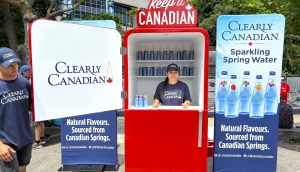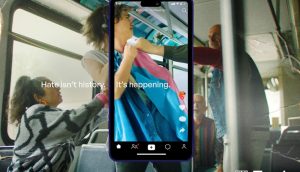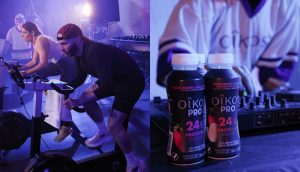When Unilever’s Lipton Sidekicks sponsored Corus Television’s popular tween series This is Daniel Cook, a related contest that offered kids a chance to star in the show was so popular among the target consumer that entrants crashed the server, said Mark Bishop, co-founder, executive producer of Marblemedia, which was involved in the campaign.
‘Most of the visits were from parents who wanted their kids to be a star,’ said Bishop during a panel discussion titled Brand Integration and Measuring ROI in Content Marketing at the Branded Content Summit, held on Friday at the Toronto Board of Trade offices.
But are contest entries the best way to measure the success of a brand’s integration campaign? Another panel member, Paul Street, senior director of research at CTV, wondered.
‘It’s a good way of getting consumers to interact with you, but how much more can you do to demonstrate the value of it?’ said Street.
The late afternoon panel, which also included Jeff Peeler, president and executive producer, Frantic Branded Content + Commercials, and was moderated by Andrew Lane, director of digital engagement at Weber Shandwick, agreed that branding success is only possible if marketers are clear on the campaign’s goals and objectives; if they have realistic expectations given the platform (specialty food shows, for example); and if the network provides sufficient backing to the project.
‘We leverage our brand for the benefit of the advertisers. We take something and make it bigger,’ said Street. He explained that CTV often provides effectiveness figures for clients to show reaction to integrated sponsorships.
For instance, when an electronics brand integrated a product into CTV’s eTalk, consumers described the brand as having the same qualities as the celebrity news program. ‘The brand was taking on aspects of the show’s characteristics,’ Street said.
Out of commonly used brand descriptors, which include sincerity, excitement, ruggedness, sophistication and competence, consumers described the brand as sincere, exciting and competent, said Street.
But most brand integration campaigns in Canada occur on specialty networks for shows that perhaps don’t have as wide a reach as eTalk, however boast a devoted viewership. Peeler, of Frantic Branded Content + Commercials which has worked with brands like Huggies and Coca-Cola, says integrations with specialty programs come with low production costs for brands who often use the ‘money left over’ from digital budgets.
‘We minimize risk,’ said Peeler. ‘We work with our clients to develop content that’s more cheaply produced. I think there’s an opportunity to do production without the [financial] risk.’
Returning to the contesting question, a brand’s satisfaction with the outcome of branded content depends on their expectations and amount invested in the first place, not unlike other marketing initiatives, he explained, asking rhetorically: ‘Can you get the 20,000 [entries] without casting a wide net?’























